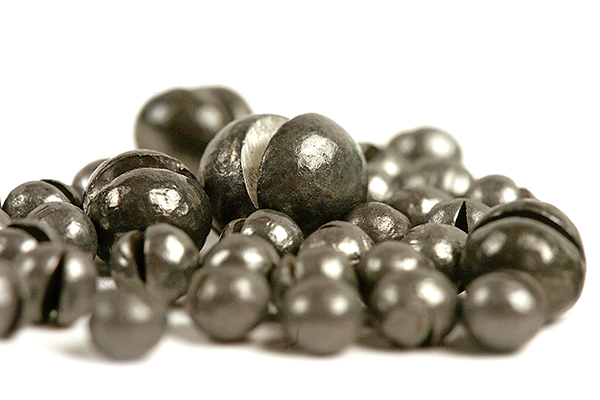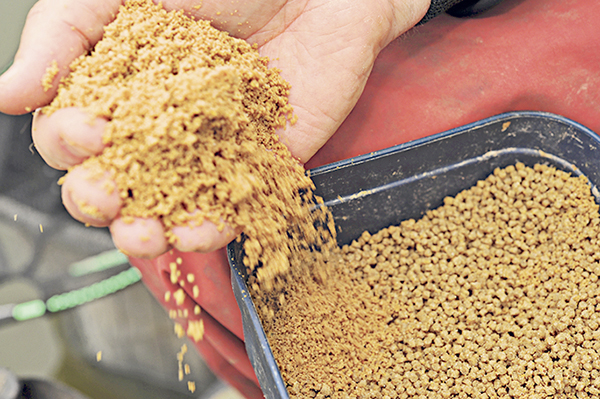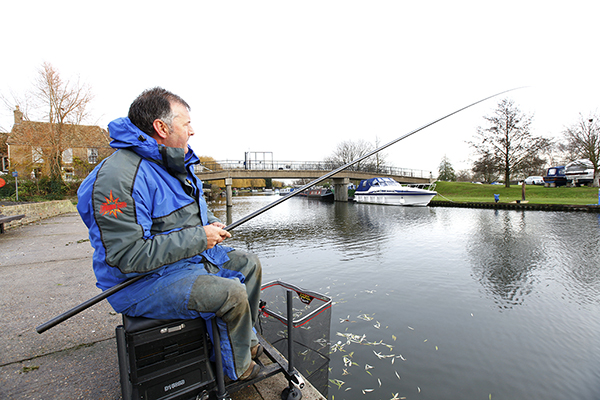Know your stuff | What are the benefits of a pop-up?
Welcome to know your stuff where all of your coarse fishing related questions get answered by our experts!
Question 1) When should I use a pop-up boilie rather than a bottom bait?
A) There are several advantages that a pop-up can offer over a bottom bait. The first is if the lakebed is very weedy or snaggy. In this instance, a bottom bait can become lost in the debris and prove impossible for a carp to find.
Also, if the carp are feeding just off bottom, presenting a bait that’s waving around right by their noses stands more chance of prompting a bite – and in clearish water a brightly-coloured pop-up will stand out a mile when fished over a small patch of pellets.
Question 2) What is the best rig to use with a swingtip, and what species of fish should I be targeting?
A) On certain days a swingtip can perform better than a quivertip as it offers little resistance to a feeding fish and you can ‘read’ bites well. The only downside is that you cannot cast as far, so it is best used for feeder casts of 40yds maximum.
In terms of species, the swingtip is ideal for bream, roach and hybrids that can be shy biters, whereas carp will pull any quivertip around in very violent fashion. That’s not to say you can’t fish for carp with a swingtip, but a quiver is better.
As for rigs, use a slightly heavier bomb or feeder than you would with a quivertip, as casting is more difficult. A simple running rig where the feeder slides on the mainline above the hooklink will produce a more positive bite than a fixed rig, and it is less likely to tangle.
Question 3) When and why should I use catmeat instead of normal luncheon meat?
A) Tinned catfood makes an effective spring carp bait on commercial fisheries. It differs from luncheon meat in that it is very, very soft and the gravy it comes in gives off an oily slick when fed.
It is an out-and-out big-fish bait and is too soft to be cast any distance on rod and line tactics. Instead, fish it in the margins or at short range on the pole in conjunction with pellet and corn loosefeed. You’ll need a big hook though (sometimes as big as a size 10) and a baiting needle to hook it correctly so that it stays on. Also, always make sure you buy the chunks in gravy not jelly!
How to hook catmeat!
Step 1)
Catmeat is usually smells awful to us, but fish love it. Grab a chunk and push a bairting needle right through the middle and out the other side
Step 2)
Next, wrap your hook (which maybe as big as a size 10) around the crook end of the needle
Step 3)
Pull the baiting needle back through the chunk of catmeat, unhook the needle then turn the hook so the point fixes into a different part of the meat
Question 4) I fish a lake that’s quite silty and I’m not convinced that I’m getting an accurate reading when plumbing up. Are there any tricks you could suggest to help?
A) Firstly, avoid using a heavy plummet that will simply sink into the silt. Using a lighter weight such as an SSG shot nipped on to the hook will give you a more accurate reading.
Once you’ve got the correct depth it is also worth thinking about what bait you are using. Maggots and worms can wriggle into the silt while heavy baits such as corn can also sink into it.
If carp are the target, it’s hard to beat a soft expander pellet or a small cube of meat fished over micro pellets or riddled meat. For silverfish, look no further than casters for both hook and feed.
Question 5) How can I get my pellets to the bottom when polefishing to prevent the small fish that sit up in the water nailing them?
A) The trouble with roach, rudd and other silverfish is that they will easily swallow 2mm and 4mm pellets as they fall through the water column.
To get the bait down to the deck where the bigger fish are, it is worth using a binder to create balls of pellets.Place your pellets in a bait box and add water, so they are just about covered. Leave them for five minutes and then add a spoonful of Sonubaits Stiki Pellet.
This will enable you to create small balls of pellets that will stay intact until they get to the bottom – and bypass the little fish.
Know your stuff | Should you strike at small taps?
Question 1. I’ve heard it said that atmospheric weather pressure affects the way carp react, both in their feeding and positioning in the water. If this is true should I be changing my tactics to improve my catches?
I would say yes, but it depends on the lakes that you fish. Some venues respond really well to high pressure, others don’t. On Stoneacres, the best conditions were bright sunlight, high pressure and light winds. That would be the time to make sure that you were fishing on the deck, and with plenty of bait too.
On the flip side, if I were fishing on Christchurch, which is just 100 yards away, I would expect the fish to be up in the water. Generally, a low-pressure front is the best conditions for carp, especially after weeks of high pressure. You will find varied results depending on the lake, but every water has a pattern, so research your lake. Some conditions are terrible, no matter what time of year it is.
Question 2. How long is it safe to retain a carp in a margin sling for?
This is a contentious subject and you will get many different answers. There is much to take into consideration when retaining carp. Personally, I would only do it when the water is cool and, overall, I don’t like putting fish in slings for any length of time if I can help it. If you do want to retain the fish, then half an hour is enough time to sort your stuff out and give the fish some time to calm down and recover.
If the water is warm, make sure that the fish is always in deep water and away from any large weedbeds. I will only retain a carp for a short period and once the fish is ready to swim away, make sure it does so safely. If the fish is exhausted and when returned, lies in a weedbed, I think it is in danger of suffocating. We had this happen a few years back on Christchurch. The fish were exhausted and with the water being so warm, it took them a while to recover after capture. It meant sitting in the water with the fish and waiting for them to regain as much strength as they could. Above all, use common sense and don’t retain a fish unless it is absolutely necessary to do so.
Question 3. I fish a lake that holds a lot of single-figure carp but also the occasional bigger fish over 20lb. Unfortunately, boilies are banned, so how else can I try to single out these bigger fish?
Carp will eat anything really, but other than boilies, one bait they really do like is pellets. Many fish are reared on pellets, so it is almost like a natural food. I would go with a straight pellet approach and maybe even add some sweetcorn in the mix for hookbait options.
If allowed, I would fish a dumbell hookbait over the top of the mix. This will mimic a larger pellet. The beauty of using pellets is that they are great carriers for liquids. I soak mine in Krill Liquid, to give them the same taste and smell as Krill boilies.
Clusters are also a great bait to use for big fish, being naturally full of oil and nutrition. That is often why big fish like boilies, because they know they can gain a lot from eating them. By using a mix that does that, additions like clusters are a superb alternative.
Question 4. Should I strike at small taps when I’m fishing the Method feeder?
These little taps are most likely being caused by small fish and should be ignored. Even in winter, a carp bite will pull your tip right round, but to remove any doubt, tighten the quivertip right up so there will be little movement shown when a small fish takes the bait. A carp, on the other hand, will often drag the tip round and almost pull the rod off the rest!
You may also get drop-back bites, caused by the fish moving the feeder back towards you or down the slope. It’s also worth casting more often as the idea of a Method feeder is to get fish to investigate the ball of feed soon after it lands. If nothing has happened after five minutes, cast in again.
Question 5. What are jelly pellets, and how do I prepare them?
Jelly pellets are firmer than normal expander pellets and will stay on the hook better, while still retaining that superb softness that carp, skimmers and F1s love.
They can be shipped out on the pole without any danger of them falling off the hook, and you can also get away with missing a few bites without the bait coming off. Presented correctly, they can even be fished on the feeder or waggler.
Preparing your own jelly pellets is easy to do and allows you to add colours and flavours to make your finished bait stand out. Doing this before you pump them is also a handy trick if the fish in your venue respond particularly well to red or yellow baits, for example, or if they show a liking for a particular flavour.
How to make jelly pellets
Step 1) Melt the jelly in hot water. Cubed jelly is fine, and you can pick the flavour and colour to suit
Step 2) Put some expander pellets into a bait pump and pour in the melted jelly to cover them
Step 3) Pump the pellets as you normally would, and allow the bait to stand for 30 seconds
Step 4) Drain the pellets off and within a couple of minutes they’ll develop a rubbery coating
Know your stuff | Casting tips and hookbait ideas!
Question 1. What are ideal conditions for fishing a long whip to hand on rivers?
When fishing up to 7m of whip to hand there will be a lot of line between the float and tip. If the wind is coming from the wrong direction it can drag the float off line, regardless of how heavy it is – so there will be conditions when the whip simply won’t work.
The ideal wind to fish long in should be blowing over your shoulder or slightly upstream – in neither case will it drag the line in the wrong direction. A back wind makes flicking the rig out much easier, while an upstream blow will actually hold the line back against the flow, keeping the float on line.
Question 2. How much additive should I douse hookbaits in at this time of year?
You can never add too much attraction when the water goes cold and clear. A single hookbait leaking out plenty of smell and colour can now outscore a plain bait, especially where carp are concerned.
With that in mind, give your boilies, pellets, corn or meat an extra-long soaking to lock in as much flavour as you can – top carp anglers will soak boilies in pots of liquid for days on end to get the job done. A quick dip before you cast out often won’t be enough. One word of warning about the liquid you use, though.
Oil-based dips aren’t fully effective in cold water as the temperature will see the liquid struggle to break down and leak off. Use a water-based additive instead.
Question 3. How does the location of carp on small lakes change from the summer to winter?
Cast around with a lead or plumb up on the float to locate the deepest areas. Clearing water will force carp out into the lake. A soft lakebed will hold the most natural food.
A feature is always worth exploring – on commercials this could be a aerator, as this provides some cover over the heads of the carp but an overhanging tree or bed of rushes against an island is equally good. However, the water will be slightly shallower here and so you may be best off waiting for the day to warm up fully before making your cast.
The same applies to the margins. Provided that there is a minimum of 3ft of water in this spot and some cover from reeds or dying lily pads, a carp or two will mooch into this spot late in the day so you should never ignore what’s under your feet.
Question 4. When should I point my feeder rod up in the air?
By pointing the rod up in the air you’ll keep line off the surface and reduce drag from the current. This way the tip won’t be bent round anywhere near as much. Having the rod low to the ground is the norm on still waters, allowing you to tuck the tip out of harm’s way. So keep the rod low on lakes or slow-flowing rivers, only putting it up in the air on powerful rivers.
Keep you tip high on big powerful rivers.
Question 5. When would you use a bait dropper?
A bait dropper is a metal bowl-shaped device with a lid swinging on a hinge and a weight attached to its base. You fill it with feed, close the lid, attach your hook and either cast it or lower it in, allowing the weight to hit the bottom, triggering the lid to open and distribute the contents.
This makes for accuracy of feeding in deep or fast-flowing water. You may be the most accurate of anglers when throwing in feed by hand but once in 10ft of water, it will spread out as it sinks across a wide area. Thus is no good if you are trying to keep things tight, especially in winter. A dropper will put the feed in the same place each and every time.
A bait dropper is a very accurate feeding device.



























